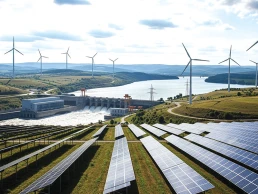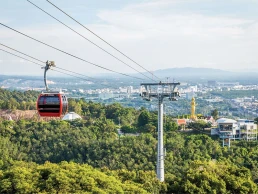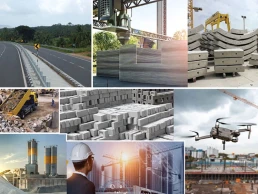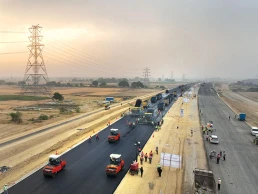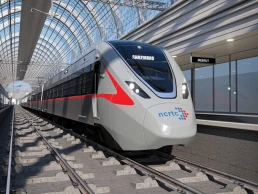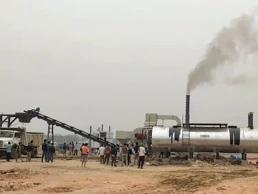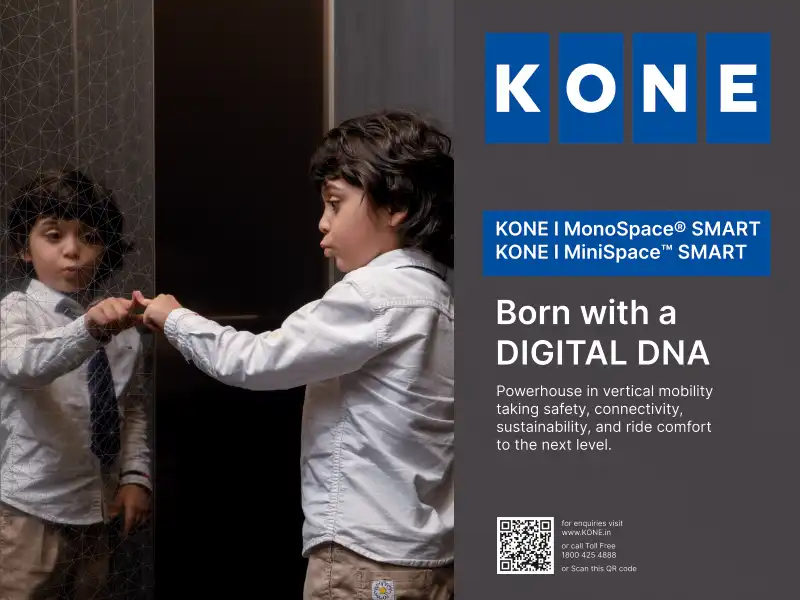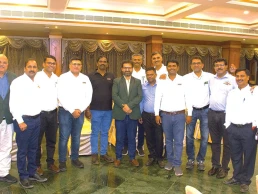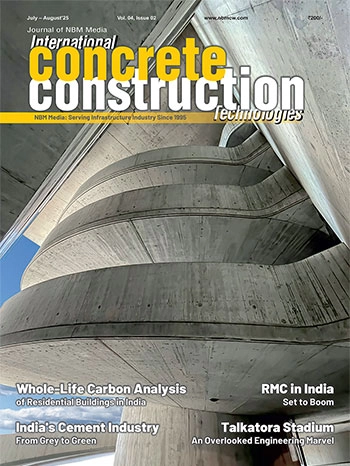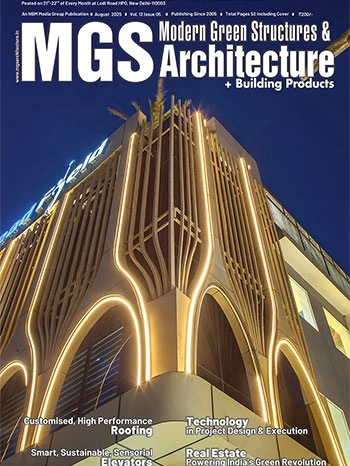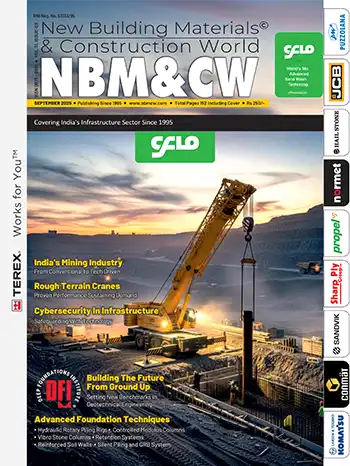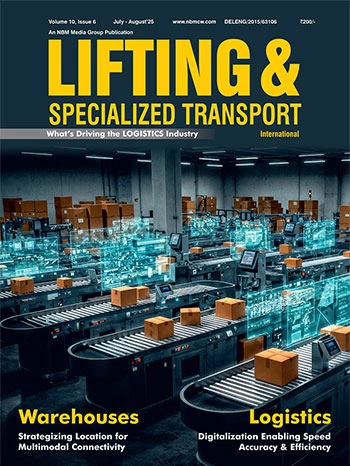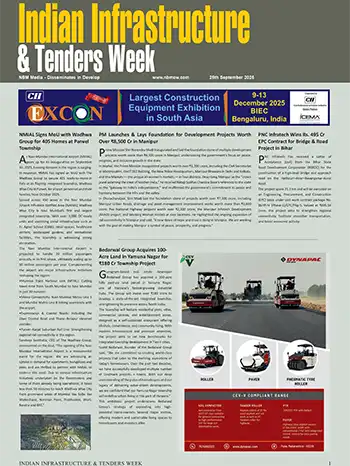Cybersecurity in Infrastructure From Compliance to Resilience

"With infrastructure becoming increasingly digital and interconnected, the line between physical and cyber threats is disappearing. Sharda Tickoo, Country Manager - India & SAARC at Trend Micro, gives insights into why the sector must shift from a compliance-driven mindset to a proactive, resilience-focused cybersecurity posture and outlines the risks to operational technology (OT), the growing role of IoT, and how public–private collaboration can safeguard critical infrastructure in the face of threats."
Why is cybersecurity critical for the infrastructure sector which is increasingly reliant on digital connectivity and operational technology?
As infrastructure continues to modernize, the convergence of IT and OT introduces a complex web of dependencies that, while enhancing efficiency and control, also significantly increases exposure to cyber risk. Operational technology, once isolated, is now deeply integrated with networked systems to enable data-driven decision-making, automation, and remote management. This connectivity dissolves traditional security perimeters and introduces vulnerabilities that can be exploited to disrupt essential services.Without robust cybersecurity, these interconnected systems remain susceptible to ransomware, data breaches, and OT-specific attacks. The sector’s dependence on real-time data for project execution, logistics, and safety monitoring amplifies the consequences of any cyber incident. Effective cybersecurity in this context is not merely about preventing attacks—it is about ensuring operational continuity, preserving public trust, and safeguarding societal stability. Protection must go beyond endpoint defense to encompass systemic visibility, real-time threat detection, and incident response strategies that reflect the combined nature of physical and digital systems.
As infrastructure companies increasingly adopt IoT and smart technologies, how should they rethink their cybersecurity strategies to protect against advanced and persistent threats?
The growing integration of IoT and smart technologies into infrastructure through smart grids, connected machinery, or intelligent traffic systems is rapidly expanding the attack surface. Unlike traditional endpoints, many IoT devices lack built-in security, and their diversity makes centralized management a challenge. This evolution calls for a fundamental shift in how we approach cybersecurity.Infrastructure companies need to adopt a layered security model that assumes every device, user, and connection could be compromised. Embracing a Zero Trust Architecture means no device or user is automatically trusted, even within the network. Micro-segmentation helps by isolating critical systems, making it harder for threats to spread if a breach occurs. At the same time, threat detection must go beyond traditional methods that rely on fixed patterns of known threats (called static signatures) and instead use behavioural analytics and AI to identify unusual activity in real time, especially as cyberattacks on critical infrastructure become more sophisticated.
Platforms with extended detection and response (XDR) capabilities can provide unified visibility across IoT, cloud, network, and endpoint environments. But technology alone isn't enough. Organizations must also secure their supply chains, run regular risk assessments, and ensure smart deployments are matched with equally smart cybersecurity. As infrastructure gets more connected, security, as well must get more intelligent and adaptive.
"Cybersecurity in infrastructure is no longer just about protecting data—it’s about ensuring operational continuity, public trust, and national stability."
How does cybersecurity integration improve overall business efficiency and resilience in infrastructure firms?
Integrating cybersecurity into the core operations of infrastructure firms goes beyond risk mitigation, it actively enhances business efficiency and resilience. When security is embedded across systems, workflows, and decision-making processes, organizations gain greater visibility, control, and responsiveness. This reduces downtime, minimizes disruptions, and ensures continuity in operations, even under threat. A well-integrated cybersecurity framework streamlines incident response, automates threat detection, and supports faster recovery all of which reduce operational bottlenecks and improve service reliability. It also enables better asset management by providing real-time insights into system health, device activity, and access controls, allowing teams to focus on proactive maintenance rather than reactive firefighting.For example, infrastructure projects operate under tight timelines and coordination across geographically dispersed sites. Integrated cybersecurity ensures continuity in operations by preventing disruptions from ransomware, phishing, or supply chain attacks. Automated alerting and reporting streamline compliance and board-level reporting, freeing up valuable resources.
What are the gaps in cybersecurity strategies within the infrastructure industry, and how can companies address them?
Many cybersecurity strategies in the infrastructure sector fall short due to fragmented approaches, limited OT visibility, and reactive rather than proactive postures. One prevalent gap is the separation between IT and OT security operations, leading to siloed decision-making and inconsistent risk assessments. This disconnect hampers a unified view of threats across the entire ecosystem.Another key weakness is the lack of investment in asset visibility and network segmentation. Organizations cannot secure what they can’t see, and traditional systems without built-in security are often overlooked in risk planning. Moreover, many strategies focus on compliance over resilience, treating cybersecurity as a checkbox exercise rather than a continuous, adaptive process aligned with real-world threats.
Addressing these gaps requires a shift in integrated security frameworks. This includes implementing solutions with unified telemetry and automated threat detection capabilities. Beyond tools, building an internal security culture is vital. Cross-functional training, practice drills that simulate cyberattacks, and alignment between CISOs and operational leaders can significantly reduce human error and improve response coordination. Additionally, adopting frameworks such as Zero Trust, where no user or system is trusted by default and ensuring compliance with evolving industry regulations will help organizations transition from reactive to proactive security postures.
What role do public-private partnerships and government regulations play in strengthening the cybersecurity posture of critical infrastructure sectors in India and the SAARC region?
Public-Private Partnerships (PPPs) and strong regulatory frameworks are essential to enhancing cybersecurity across critical infrastructure in India and the SAARC region. Government bodies set the foundation through baseline standards, sector-specific policies, and cross-sector coordination. From defining cybersecurity under the Information Technology Act, 2000, to setting up key institutions like CERT-In and launching the National Cyber Security Policy (NCSP), the government has taken several significant steps to safeguard critical infrastructure. The National Critical Information Infrastructure Protection Centre (NCIIPC), for instance, enforces a dual strategy of equipment certification and trusted vendor evaluation in various sectors. Platforms such as the National Cyber Coordination Centre (NCCC) further strengthen defense by enabling real-time threat intelligence sharing between CERT-In and private entities. However, enforcement and capacity-building remain areas for improvement."Proactive cybersecurity is a business enabler, reducing downtime, preventing disruptions, and ensuring infrastructure projects remain on schedule and within budget."
PPPs play a pivotal role in bridging these gaps, supporting joint threat simulation exercises, workforce development, and R&D in advanced areas like AI-based threat detection, blockchain security, quantum encryption, and digital twins for infrastructure resilience. These collaborations foster scalable, secure-by-design solutions tailored to regional challenges. By combining regulatory intent with private-sector innovation, the SAARC region can build a resilient, responsive cybersecurity ecosystem that protects its digital backbone and supports long-term infrastructure reliability.
How does Trend Micro’s cybersecurity approach cater to the unique needs of infrastructure firms?
Trend Micro’s cybersecurity approach is well-aligned with the operational complexity and risk profile of infrastructure firms. Its unified cybersecurity platform, Trend Vision One™, offers visibility and control across diverse environments - from endpoints to cloud workloads and OT systems. This is crucial for infrastructure firms managing distributed operations, legacy systems, and high-stakes physical assets.Trend’s emphasis on extended detection and response (XDR) helps bridge the traditional divide between IT and OT security, enabling real-time threat correlation across different layers of infrastructure.
For example, Trend’s integration of network security with endpoint and email protection enables infrastructure firms to contain advanced threats like targeted ransomware or phishing-driven breaches before they propagate.
In practice, Trend Micro’s solutions have enabled various companies to simplify their security architecture, improve reporting for compliance, and centralize control across endpoints. Furthermore, its strong support ecosystem and roadmap alignment with Zero Trust and secure access principles ensure long-term scalability. Trend’s integrated, proactive, and scalable approach effectively addresses the complex security demands and operational constraints faced by infrastructure firms that are navigating digital transformation.
"You can’t secure what you can’t see. Asset visibility and unified threat detection across IT and OT environments are the foundation of modern infrastructure defense."
Please share some real-world examples or case studies where proactive cybersecurity implementation helped an infrastructure firm mitigate or avoid a significant threat or breach?
Proactive cybersecurity is about ensuring robust protection well before any breach or threat occurs. A prime example is Dilip Buildcon, a leading Indian infrastructure firm. With more than 3000 endpoints and servers across multiple sites, the company faced challenges in maintaining visibility and support. By deploying Trend Micro’s comprehensive security solutions—like Trend Vision One with XDR capabilities, they established centralized visibility and enhanced threat detection before any incidents took place.Previously, Dilip Buildcon’s IT team faced challenges with fragmented reporting and responding to threats reactively. After adopting Vision One, they gained streamlined telemetry, automated alerts, and daily reporting, allowing them to act swiftly and mitigate risks before they escalated. This forward-thinking approach significantly strengthened their security posture; particularly as remote work and digital expansion surged during the pandemic and elevated cybersecurity to a boardroom-level conversation.
This example reflects a broader trend: many global infrastructure firms are strengthening their defenses by implementing early detection systems and Zero Trust frameworks. These proactive measures not only prevent potential damage but also position companies to respond effectively in an evolving threat landscape. In this context, proactive cybersecurity is not just a defense strategy; it’s a critical enabler of resilience, where failing to act in advance can have far-reaching consequences.


































